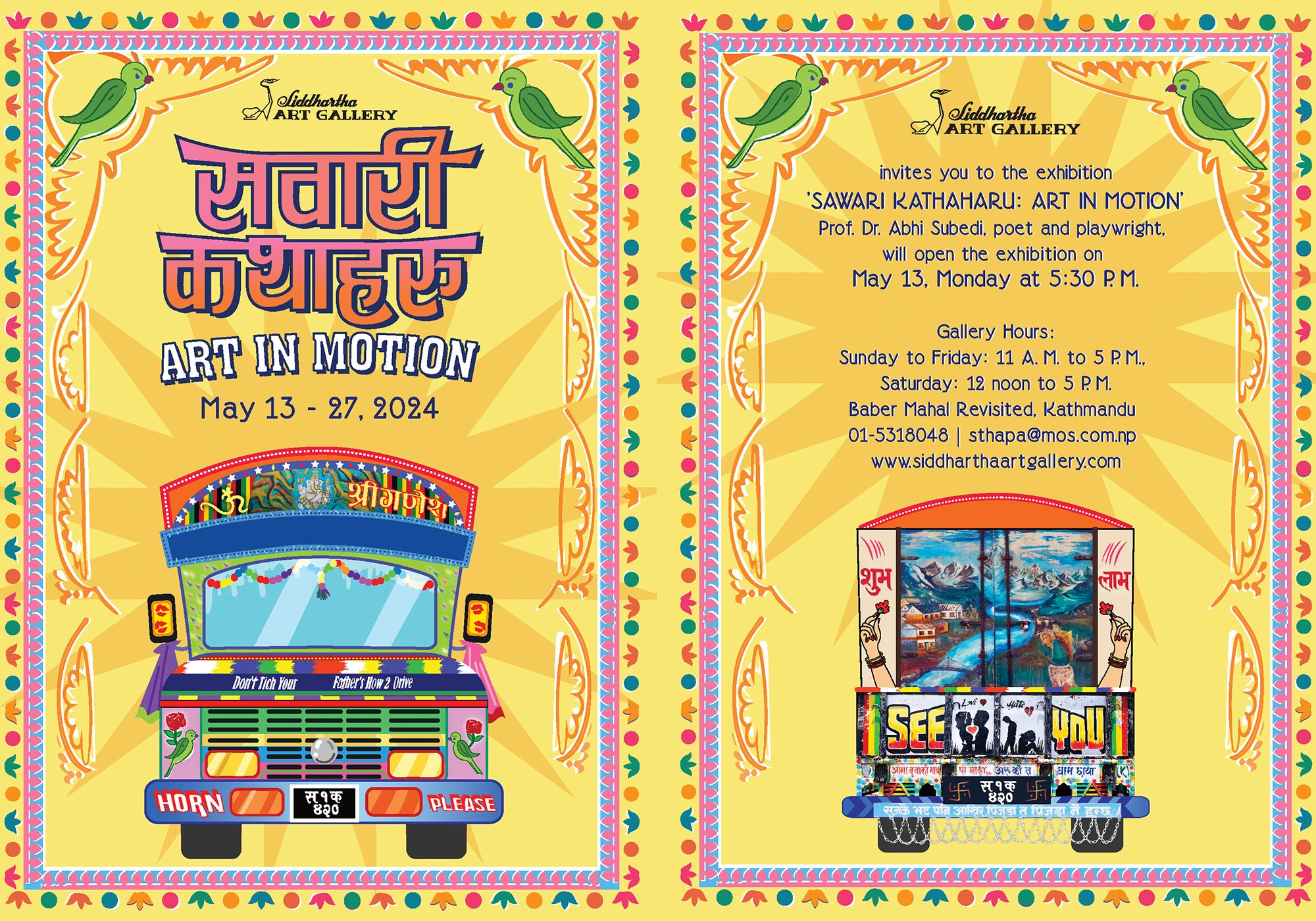WHEN: May 13 - May 27, 2024
WHERE: Siddhartha Art Gallery
Exhibition Statement
Every once in a while I keep thinking about what was the first-ever सवारी साहित्य (vehicle literature) I ever saw. Though it would be an impossible – albeit interesting – endeavour to trace back my first-ever encounter with an unusually embellished truck with a witty one-liner on its back, it’s true that I’ve been fascinated with moving proses for the longest time. And I quickly found out that I’m not the only one. This exhibition is a product of individuals brought together by their fascination and love for Sawari art and literature — each having documented or written about the subject at some point in their lives.
Last year around June, Sravasti photographed and wrote about truck art in Nepal, eventually publishing it on her blog. In February 2023, my friends – Julin, and Sejol – and I filmed a small documentary on Sawari Sahitya, documenting some witty poems and probing drivers, and auto workshop owners about why they like writing on their vehicles. The idea for the documentary came to me because, in 2019, I’d interviewed Abhushan Gautam who – until 2022 – ran a social media page called ‘Literature on Wheels’, dedicated to documenting ‘Sawari Sahitya’.
This exhibition – through photographs, film and illustrations — invites you to find answers to these questions: Why/How do art, poems and prose sneak their way into these vehicles, which are initially manufactured to look plain and inconspicuous? Why do drivers spend extra time, money and effort to embellish their vehicles? Are these statements personal or say more about our society as a whole? Why are we – the consumers – so fascinated by them?
Stumbling across a stylish truck or a witty shayari during a mundane commute offers a moment of pause and humour. Beyond mere amusement, this art also signifies a deeper longing within us to be acknowledged and understood, echoing our desires, struggles, and thoughts. From the iconic ‘हस मत पगली प्यार हो जायेगा’ (Laugh not, dear. I might fall in love) to the quintessential ‘आमा बुवाको आशीर्वाद’ (Blessings from Mum and Dad), ‘Sawari Sahitya’ is a raw, unfiltered and honest expression of our collective psyche. It is unconcerned with formality or discretion. It is good, bad and ugly—oscillating from witty, absurd and profound to deeply misogynistic and vulgar. Despite its blatant candidness, it features pertinent commentary on issues like migration, employment, romance, familial duty and even death. It challenges the rigid notions of art and literature, liberating them out of closed rooms and into the public sphere.
This exhibition aims to serve as an extension of the kitschy and eclectic aesthetic of the Nepali vehicular realm – adorned with vibrant hues, bizarre poetry and the like. At the same time, through digital illustrations and a special game, it also aims to subvert the masculine narrative found in ‘Sawari Sahitya’ that sees women take up an ornamental, passive role in quotes and poems on romance. By tweaking the famous quote ‘Don’t teach your father how to drive’ to ‘Don’t teach your mother how to drive’, we invite you to create your newer, more inclusive narratives all the while appreciating the whimsical nature of Sawari art and literature.
Urza Acharya
Curatorial Assistant

